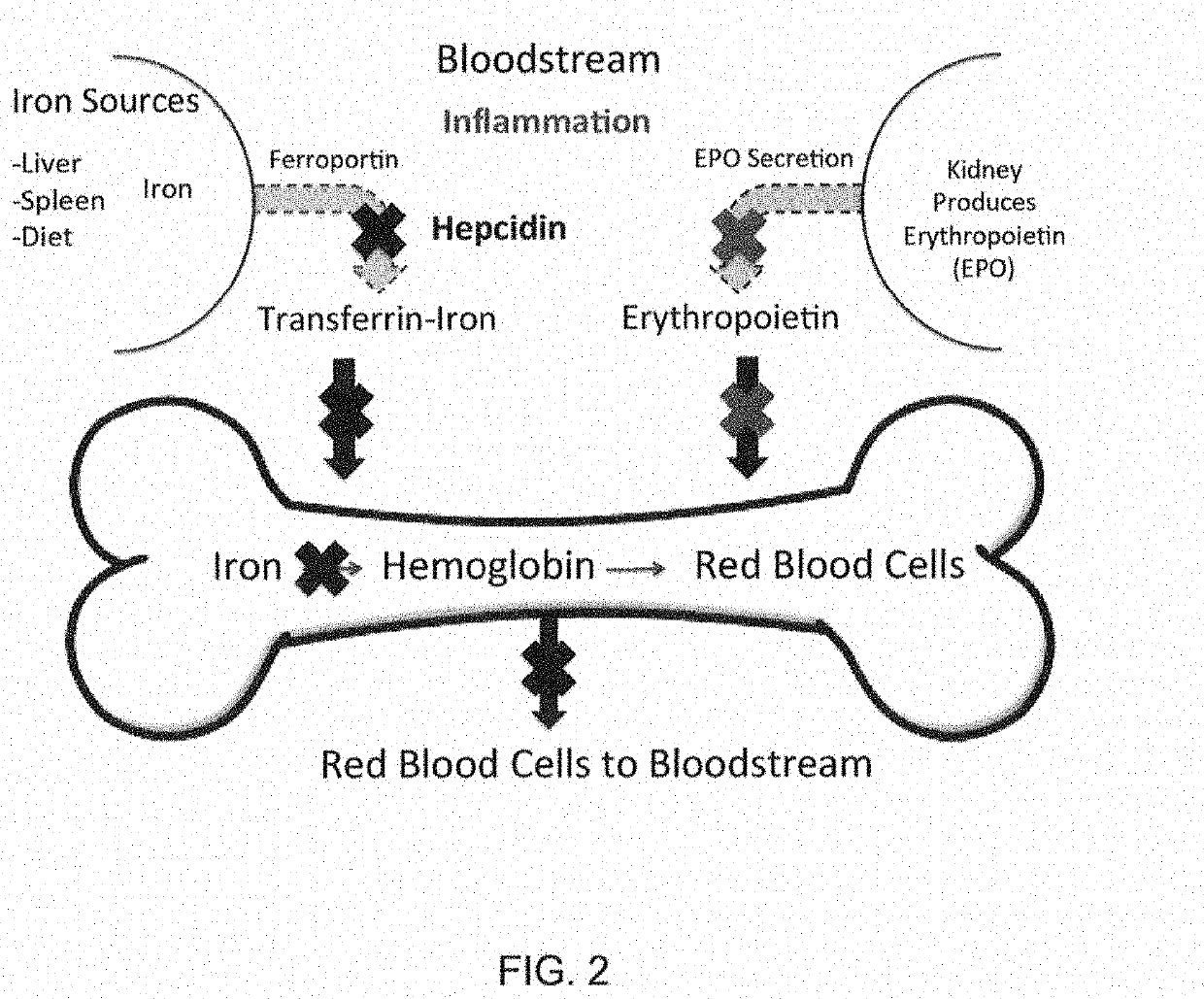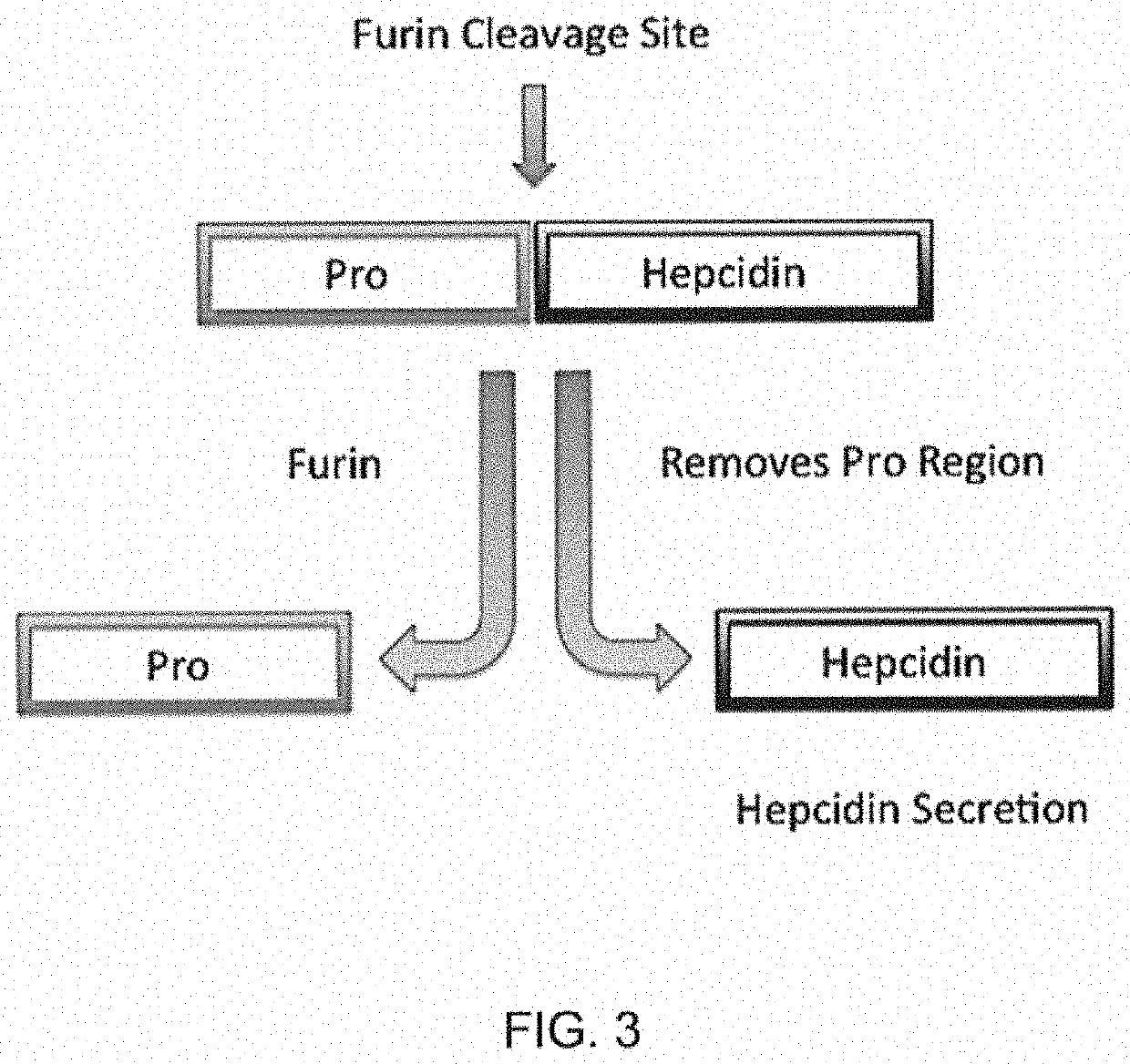Compositions and methods for treating iron overload
a technology of compositions and methods, applied in drug compositions, amide active ingredients, anti-noxious agents, etc., can solve the problems of res iron overload, liver and spleen iron overload, iron overload from the iron given, etc., to reduce the concentration of iron
- Summary
- Abstract
- Description
- Claims
- Application Information
AI Technical Summary
Benefits of technology
Problems solved by technology
Method used
Image
Examples
example 1
[0082]Some of the HIV protease inhibitors have an off-target inhibition of the protease furin. This is important because hepcidin is synthesized as an inactive precursor called prohepcidin. Furin cuts the inactive prohepcidin in to the active hepcidin (see FIG. 3).
[0083]Proof of concept for this hypothesis was shown through computer docking studies that identified two binding sites for these drugs. A catalytic site and an allosteric site were identified. Enzyme assays with purified furin showed these drugs inhibit furin and in combination, a catalytic site inhibitor and an allosteric site inhibitor inhibited furin synergistically. Table 1 lists the drugs and identifies them as catalytic site inhibitors or allosteric site inhibitors.
TABLE 1Affinity of Drugs Binding FurinCatalytic Site ΔGAllosteric Site ΔGDrug Namekcal / molkcal / molDec-RVKR-CMK−11.07−9.25Amprenavir—−7.81Atazanvir—−8.82Darunavir—−8.18Lopinavir—−7.6Nelfinavir −8.24−8.82Ritonavir—−8.57Tipranavir—−8.58
example 2
[0084]Treatment with HIV protease inhibitors decreased hepcidin secretion from cells and in the serum of a rat model of inflammation (see FIGS. 4 and 5). The lower hepcidin levels stabilized ferroportin and increased serum iron levels and bone marrow iron levels. The liver and spleen iron levels dropped 2-fold to 4-fold in the inflamed rats or non-inflamed control rats, respectively. The potent stabilization of ferroportin in the control rats that were not inflamed and the 4-fold decrease in liver iron suggests that this treatment can be used, even in the absence of elevated hepcidin to stabilize ferroportin and allow tissue iron release through ferroportin.
example 3
[0085]Furin fluorescence assay evaluating the effectiveness of HIV protease inhibitors to inhibit furin and block the activation of hepcidin from prohepcidin. The dose response is shown for each drug at 55, 110 and 220 micromolar doses of the drugs.
[0086]An example is shown in FIG. 4 showing enhanced stabilization of ferroportin and in FIG. 5 (panel B) where liver iron is exported into the bloodstream. Similar data for the spleen has also been obtained. Depending on the individual, two additional combination treatments might be required. The first is to use an iron chelator in combination with the HIV protease inhibitor to bind the iron in serum once the iron exits ferroportin. The iron chelator complex can be secreted through the kidneys (see FIG. 6).
[0087]The stabilization of ferroportin to initiate iron export from the liver and spleen will help alleviate the iron overload in these tissues of the RES. Ferroportin stabilization, however, might also facilitate iron import from ferr...
PUM
| Property | Measurement | Unit |
|---|---|---|
| Concentration | aaaaa | aaaaa |
Abstract
Description
Claims
Application Information
 Login to View More
Login to View More - R&D
- Intellectual Property
- Life Sciences
- Materials
- Tech Scout
- Unparalleled Data Quality
- Higher Quality Content
- 60% Fewer Hallucinations
Browse by: Latest US Patents, China's latest patents, Technical Efficacy Thesaurus, Application Domain, Technology Topic, Popular Technical Reports.
© 2025 PatSnap. All rights reserved.Legal|Privacy policy|Modern Slavery Act Transparency Statement|Sitemap|About US| Contact US: help@patsnap.com



